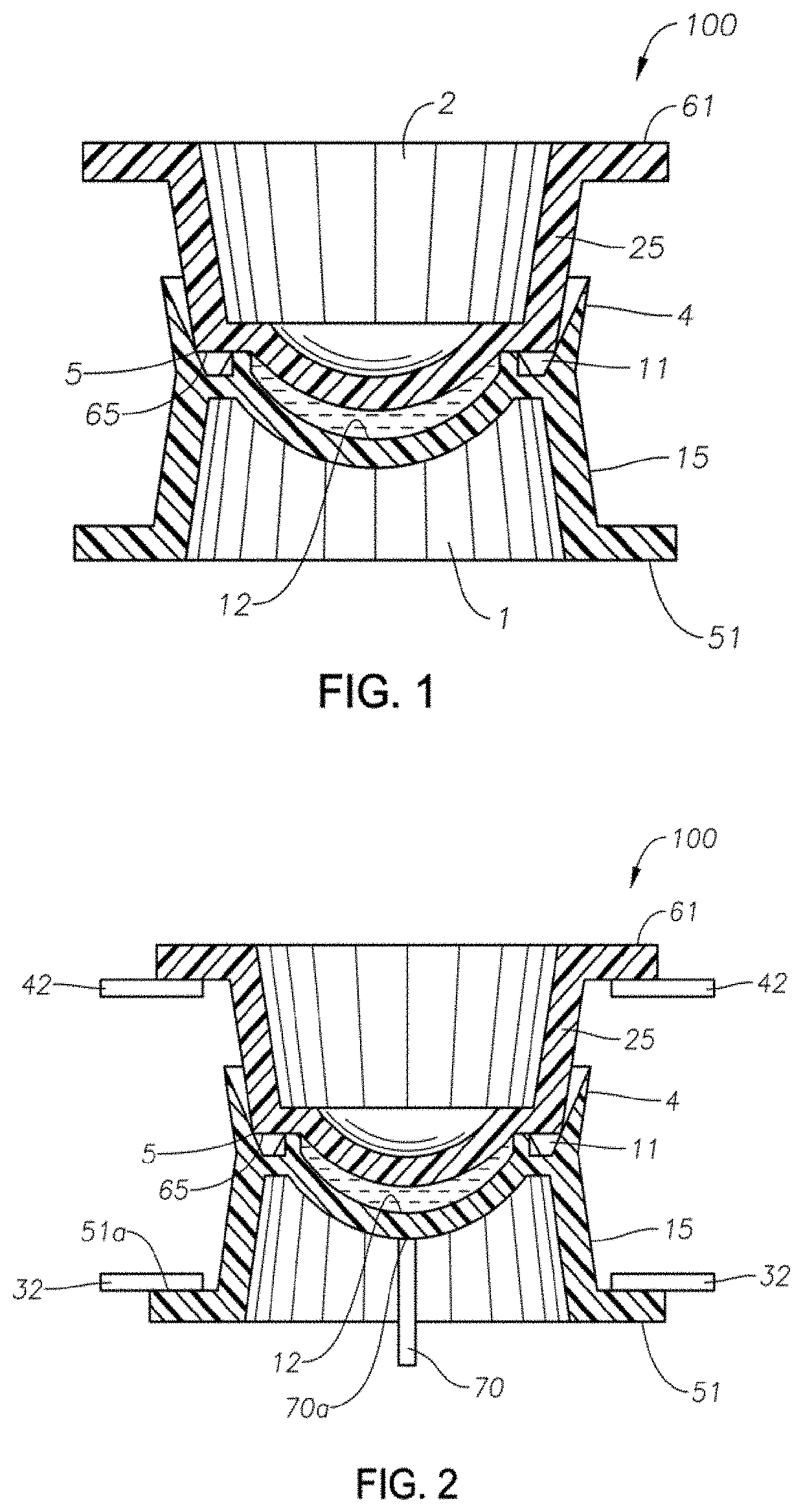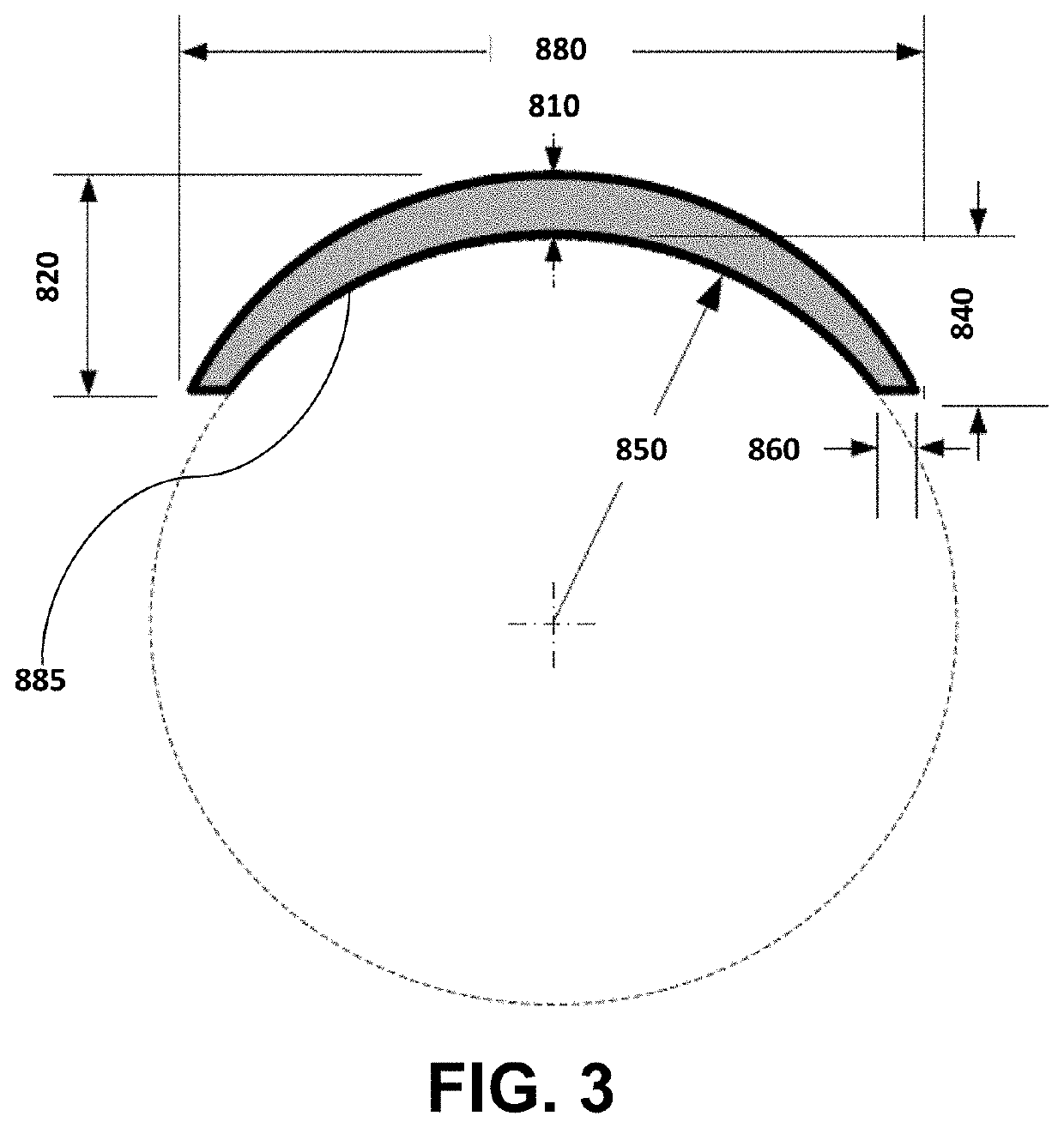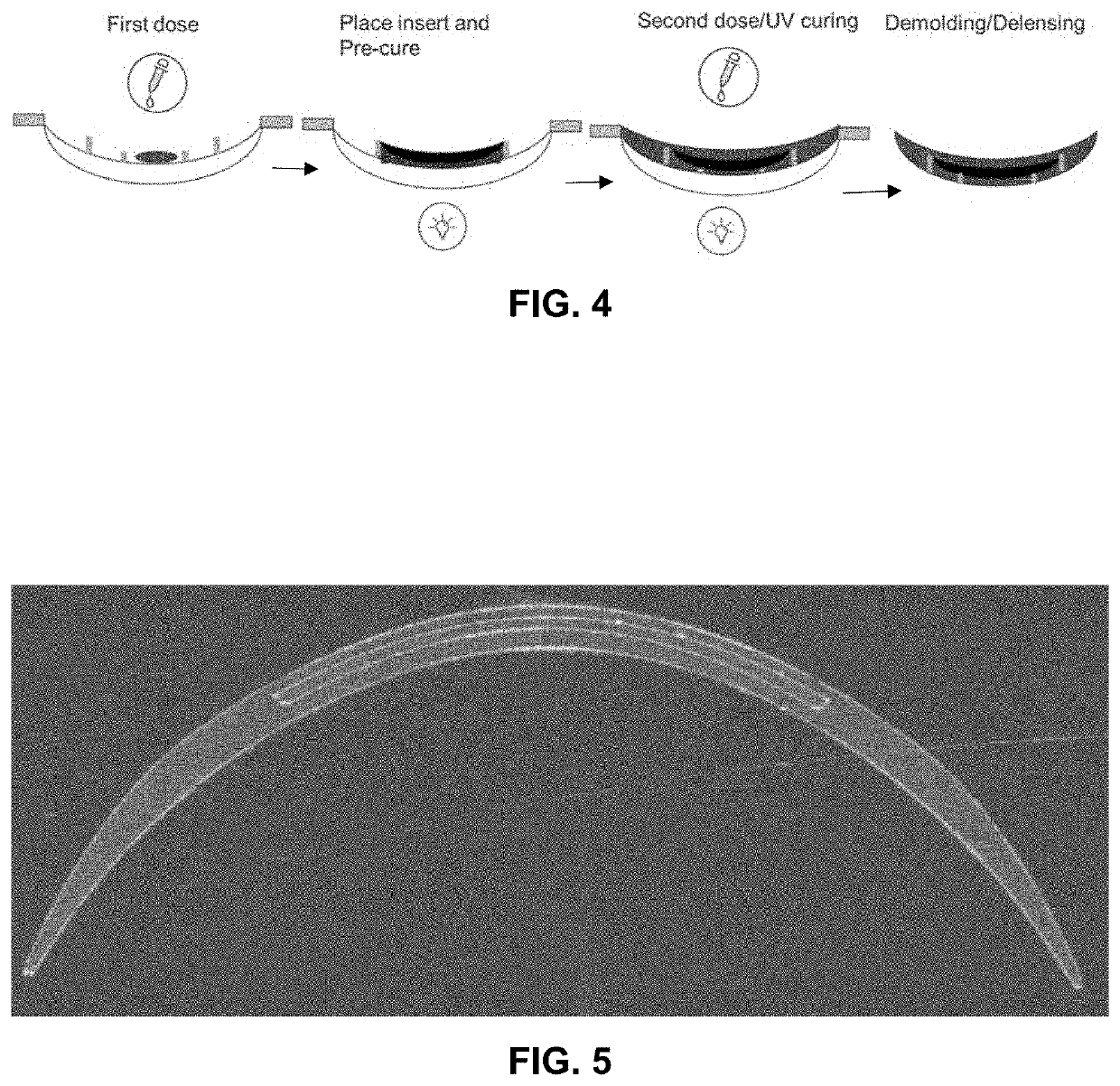Method for producing embedded or hybrid hydrogel contact lenses
a hydrogel contact lens and hydrogel technology, applied in the field of hydrogel contact lens embedded or hybrid hydrogel contact lens, can solve the problems of hydrogel contact lens water absorption, damage to the molded lens, and large size of swelling
- Summary
- Abstract
- Description
- Claims
- Application Information
AI Technical Summary
Benefits of technology
Problems solved by technology
Method used
Image
Examples
example 1
Oxygen Permeability Measurements
[0283]Unless specified, the oxygen transmissibility (Dk / t), the intrinsic (or edge-corrected) oxygen permeability (Dki or Dkc) of a contact lens or contact lens material or an insert or an insert material are determined according to procedures described in ISO 18369-4.
Equilibrium Water Content
[0284]The equilibrium water content (EWC) of contact lenses is determined as follows.
[0285]Amount of water (expressed as percent by weight) present in a hydrated hydrogel contact lens, which is fully equilibrated in saline solution, is determined at room temperature. Quickly stack the lenses, and transfer the lens stack to the aluminum pan on the analytical balance after blotting lens in a cloth. The number of lenses for each sample pan is typically five (5). Record the pan plus hydrated weight of the lenses. Cover the pan with aluminum foil. Place pans in a laboratory oven at 100±2° C. to dry for 16-18 hours. Remove pan plus lenses from the oven and cool in a de...
example 2
[0294]This example illustrates how to control the water-swelling degree of unprocessed SiHy contact lenses by adding a polymeric non-reactive diluent in the polymerizable composition for forming the SiHy materials while ensuring the dry-delensability of unprocessed SiHy contact lenses.
Contact Lens Formulation Composition
[0295]A basic polymerizable composition as control lens formulation is prepared at room temperature in air by blending all the components for 30-120 minutes using a magnetic stir plate and has the following composition: 6 weight unit parts of a hydrophilized polydimethylsiloxane vinylic crosslinker of formula (A)
in which ν1 is an integer of from 30 to 500 and (01 is an integer of from 1 to 75 and is prepared according to procedures described in U.S. patent Ser. No. 10 / 081,697 (Mn ˜10.7K g / mol, OH content ˜1.8 meq / g); 34 weight unit parts of monobutyl-terminated monomethacryloxypropyl-terminated polydimethylsiloxane (M.W. 600 to 800 g / mol from Gelest); 40 weight units...
example 3
Contact Lens Formulation Composition
[0301]Four polymerizable composition are prepared at room temperature in air by blending all the components for 30-120 minutes using a magnetic stir plate and has the following composition: 33 weight part units of CE-PDMS (Mn 6.5 KD) which has three polydimethylsiloxane (PDMS) segments linked via diurethane linkages between two PDMS segments and two urethane linkages each located between one terminal methacrylate group and one PDMS segment and is prepared according to method similar to what described in Example 2 of U.S. Pat. No. 8,529,057; 17 weight part units of TrisAm (N-[tris(trimethylsiloxy)-silylpropyl]acrylamide); 24 weight part units of DMA (N,N-dimethylacrylamide); 0.5 weight part unit of Darocur 1173; and 25 weight unit parts of one of the 4 organic solvents (ethylene glycol butyl ether, tert-amyl alcohol, isopropanol, and ethanol).
[0302]Cast-molded contact lenses are prepared by dosing an amount of a formulation prepared above in each p...
PUM
| Property | Measurement | Unit |
|---|---|---|
| Temperature | aaaaa | aaaaa |
| Fraction | aaaaa | aaaaa |
| Fraction | aaaaa | aaaaa |
Abstract
Description
Claims
Application Information
 Login to View More
Login to View More - R&D
- Intellectual Property
- Life Sciences
- Materials
- Tech Scout
- Unparalleled Data Quality
- Higher Quality Content
- 60% Fewer Hallucinations
Browse by: Latest US Patents, China's latest patents, Technical Efficacy Thesaurus, Application Domain, Technology Topic, Popular Technical Reports.
© 2025 PatSnap. All rights reserved.Legal|Privacy policy|Modern Slavery Act Transparency Statement|Sitemap|About US| Contact US: help@patsnap.com



